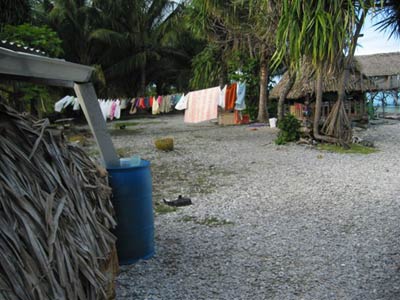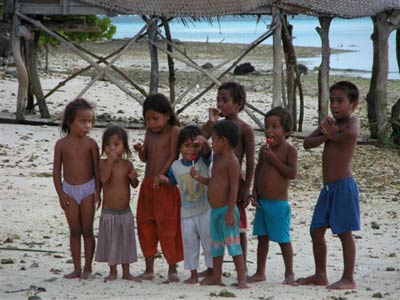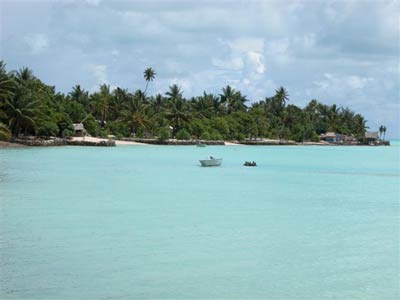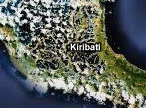S.T.A.B.L.E. Program – Republic of Kiribati
April 2004
By MaryJane McGregor, S.T.A.B.L.E. Regional Trainer
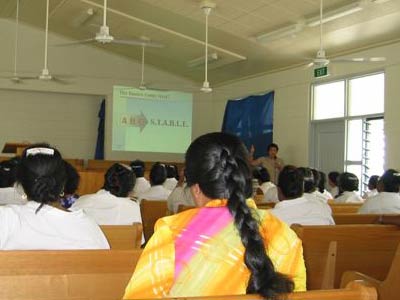
MaryJane McGregor teaching in Kiribati
April 25th –May 3rd, 2004 Lead Instructor M.J. McGregor, BSN, RN and Support Instructors, Weatherford Clayton, MD, Douglas Coombs, MD and Gordon Lassen, RT presented the S.T.A.B.L.E. Learner Program on the Island of Tarawa in the Republic of Kiribati. (Pronounced Kir-ree-bas). The Republic of Kiribati is an island group in the Western Pacific Ocean, consisting of an archipelago of some 33 low-lying coral atolls surrounded by extensive reefs with a total land area of 800 square kilometers.
The trip to Kiribati was sponsored by the Humanitarian Services Department of the Church of Jesus Christ of Latter-day-Saints (LDS), which brings S.T.A.B.L.E. and Neonatal Resuscitation (NRP) training to physicians and nurses in remote areas of the world.
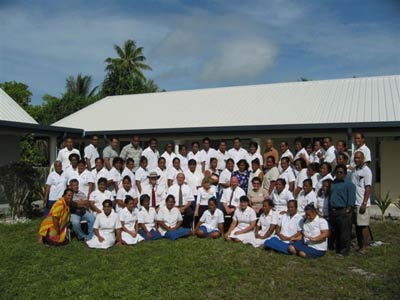
Graduating class
A group of 59 physicians, midwives, nurses and nursing students enjoyed 2 days of NRP training and 2 days of S.T.A.B.L.E. training. Both programs were very well received. The group was very eager to learn and excited about the information presented. Many of the concepts were very new to the majority of the group, but they were grateful for the information and eager to begin using their new skills and information in the nursing school curriculum and in their practices.
The classes were held in an LDS church facility. The building was beautiful with a gorgeous view of the ocean right out of the classroom window.
There are some challenges, however, in teaching in these remote areas. First, many of the supplies that were shipped in advance did not arrive. The S.T.A.B.L.E. manuals were in the boxes that did not arrive. However we learned this before leaving the U.S., and we were able to take 40 Learner books with us. We did have some instructor books as well, so almost everyone ended up with a book.
Second, we really did not know the training or capabilities of the staff attending the class or any information about equipment that was available to the staff in the hospitals and clinics. It would have been helpful to know these things in advance so that we could tailor the course for them and their abilities.
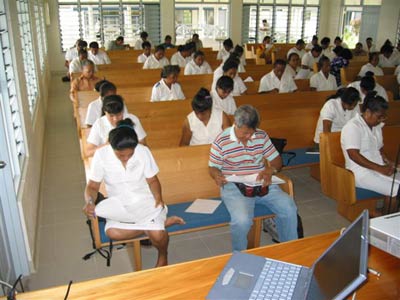
Students taking post test
We originally were planning an instructor course as well as a learner course, but we soon realized that no one was qualified to be a lead instructor. None of the doctors had any high-risk neonatal training. We therefore did not teach the instructor part of the course. There were however, some attendees capable of teaching certain sections of the class, so some will be registered as support instructors. However, they will not be submitting rosters since they have no lead instructor on the island.
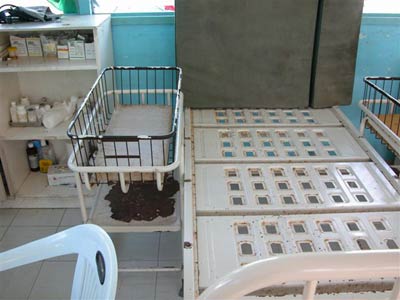

The situation in Kiribati is interesting. They have no way to transport sick babies from the outer islands to Tarawa where the hospital is located except by small boats. On the outer islands, they have some small clinics, but most babies are delivered in their homes or huts. If the patients do survive long enough to get to the hospital in Tarawa, there is no way to transport them to a larger hospital with more neonatal services except on a commercial flight that flies once or twice a week to and from Fiji. Therefore, the mortality rate in Kiribati is quite high, about 51/1000 births compared to the US which is 7/1000 births.
Babies born in the hospital at Tarawa do have the advantage of one working isolette. They can provide IV therapy and do blood gases. They also have one O2 saturation monitor that works part of the time.
I was very impressed with the dedication and excitement of the people of Kiribati. Even though they lack much of the training and equipment that we take for granted, they want desperately to improve the care that they give to newborns. Their dedication is inspiring under very difficult circumstances. I have no doubt that as they implement the information and skills they learned and practiced in NRP and S.T.A.B.L.E. they will improve the outcomes for the children of Kiribati.
More photos from Kiribati:


